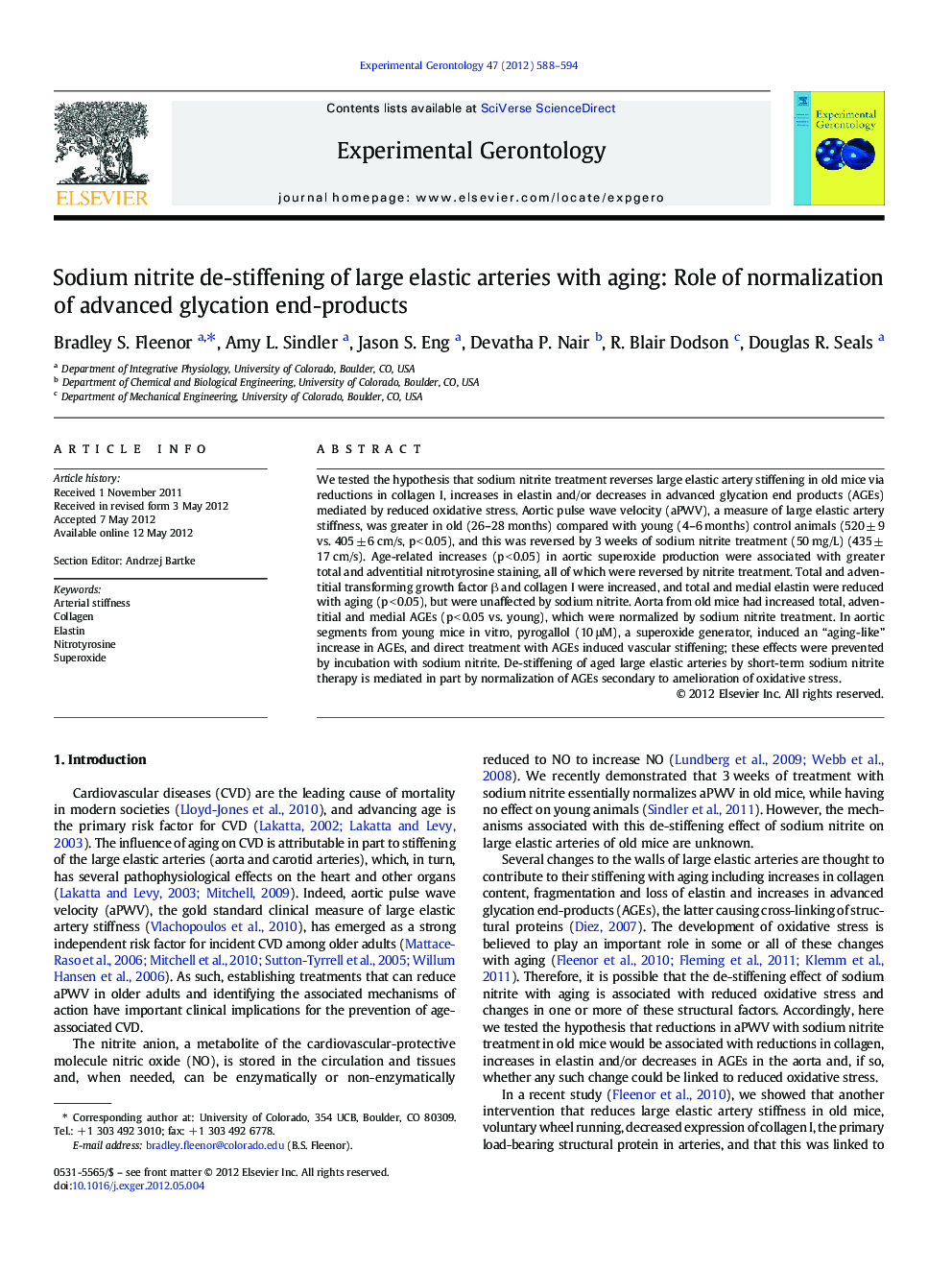| Article ID | Journal | Published Year | Pages | File Type |
|---|---|---|---|---|
| 1906679 | Experimental Gerontology | 2012 | 7 Pages |
We tested the hypothesis that sodium nitrite treatment reverses large elastic artery stiffening in old mice via reductions in collagen I, increases in elastin and/or decreases in advanced glycation end products (AGEs) mediated by reduced oxidative stress. Aortic pulse wave velocity (aPWV), a measure of large elastic artery stiffness, was greater in old (26–28 months) compared with young (4–6 months) control animals (520 ± 9 vs. 405 ± 6 cm/s, p < 0.05), and this was reversed by 3 weeks of sodium nitrite treatment (50 mg/L) (435 ± 17 cm/s). Age-related increases (p < 0.05) in aortic superoxide production were associated with greater total and adventitial nitrotyrosine staining, all of which were reversed by nitrite treatment. Total and adventitial transforming growth factor β and collagen I were increased, and total and medial elastin were reduced with aging (p < 0.05), but were unaffected by sodium nitrite. Aorta from old mice had increased total, adventitial and medial AGEs (p < 0.05 vs. young), which were normalized by sodium nitrite treatment. In aortic segments from young mice in vitro, pyrogallol (10 μM), a superoxide generator, induced an “aging-like” increase in AGEs, and direct treatment with AGEs induced vascular stiffening; these effects were prevented by incubation with sodium nitrite. De-stiffening of aged large elastic arteries by short-term sodium nitrite therapy is mediated in part by normalization of AGEs secondary to amelioration of oxidative stress.
► De-stiffens large elastic arteries. ► Reverses arterial superoxide production and oxidative stress. ► Attenuates oxidant induced advanced glycation end-products formation. ► Prevents advanced glycation end-products induced arterial stiffening. ► Sodium nitrite therapy is a promising treatment for arterial stiffness with aging.
